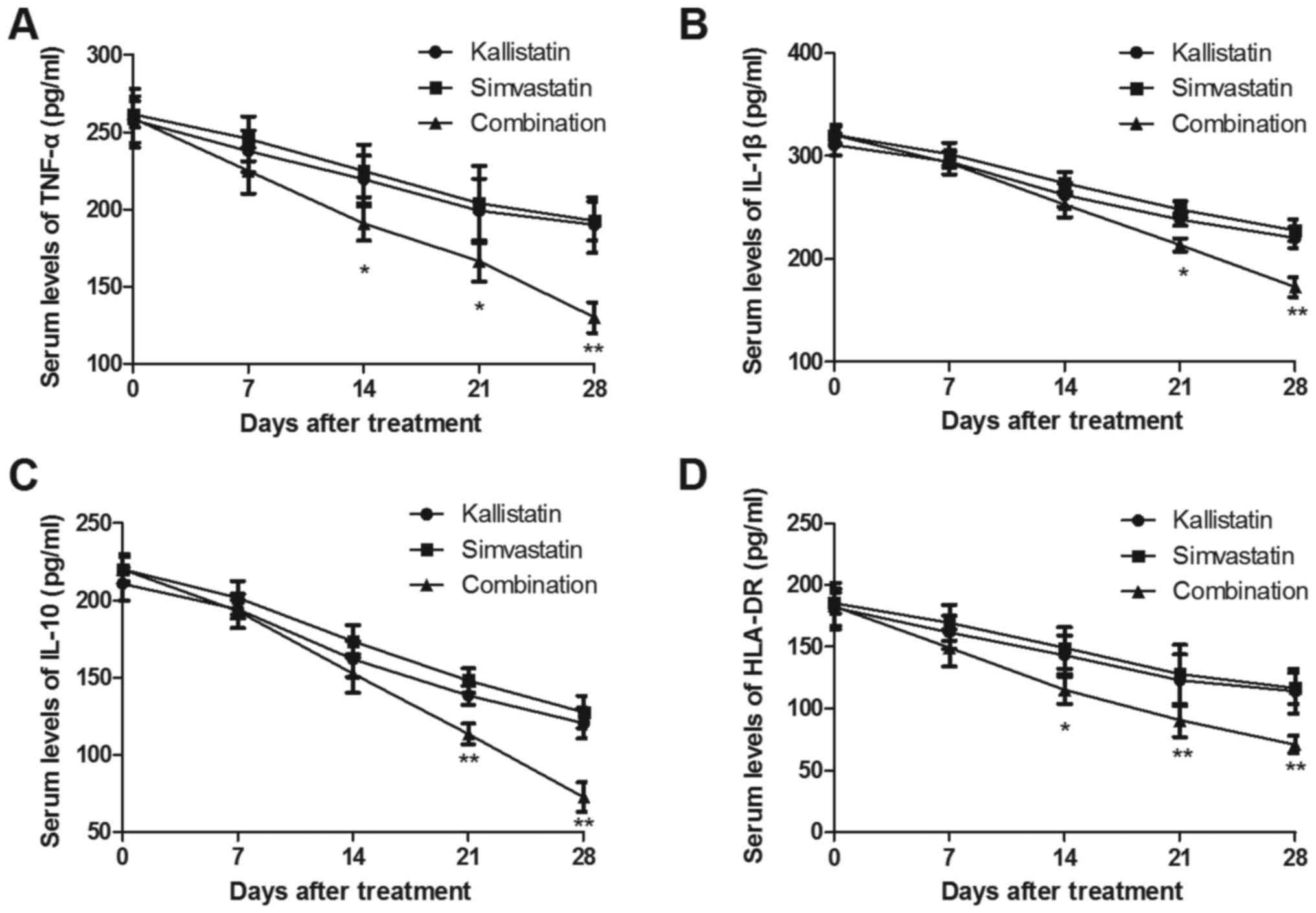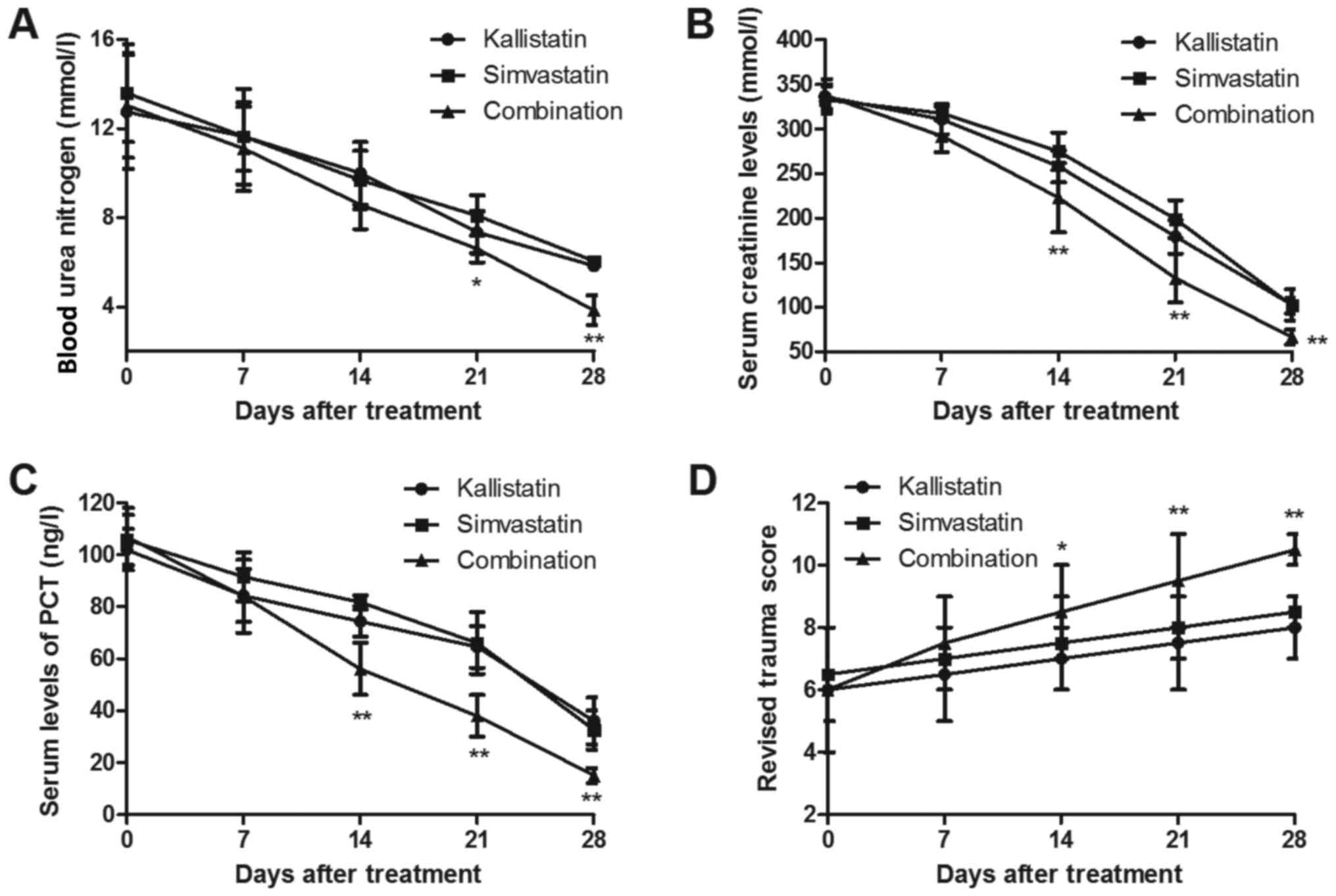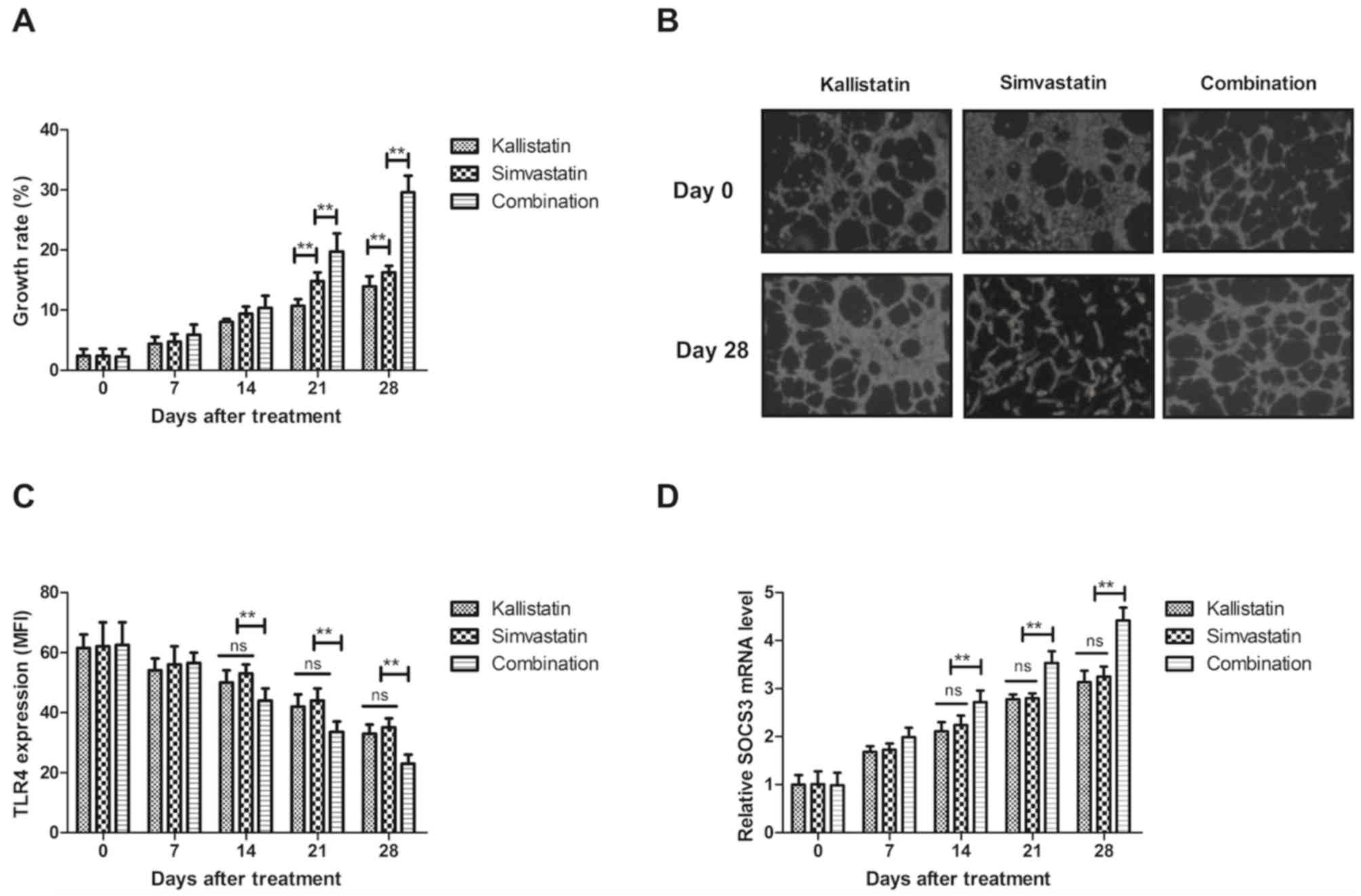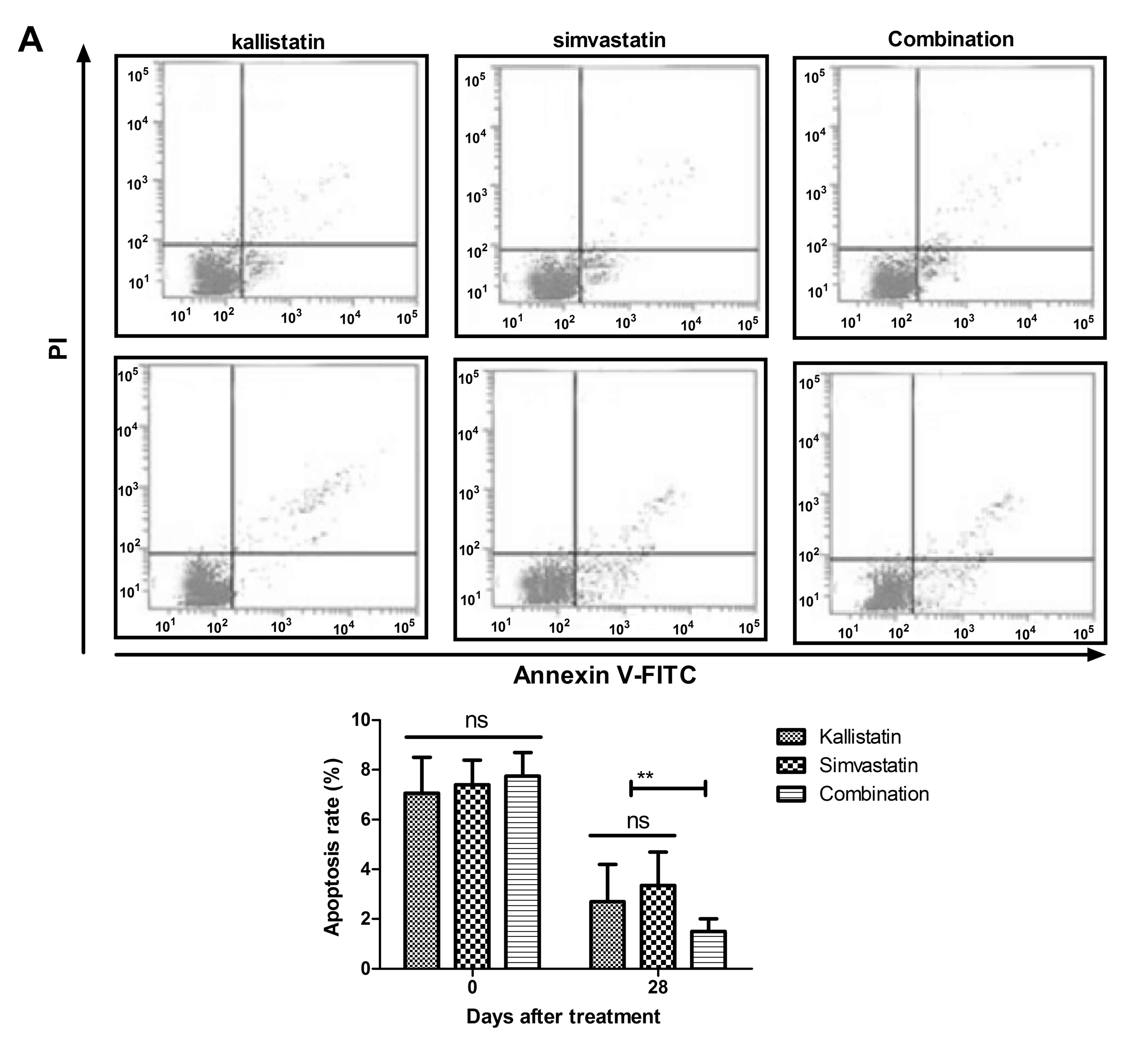|
1
|
Housinger TA, Brinkerhoff C and Warden GD:
The relationship between platelet count, sepsis, and survival in
pediatric burn patients. Arch Surg. 128:65–67. 1993. View Article : Google Scholar : PubMed/NCBI
|
|
2
|
Yu T, Stockmann C, Healy DP, Olson J, Wead
S, Neely AN, Kagan RJ, Spigarelli MG and Sherwin CM: Determination
of optimal amikacin dosing regimens for pediatric patients with
burn wound sepsis. J Burn Care Res. 36:e244–e252. 2015. View Article : Google Scholar : PubMed/NCBI
|
|
3
|
Sheridan RL: Sepsis in pediatric burn
patients. Pediatr Crit Care Med. 6 3 Suppl:S112–S119. 2005.
View Article : Google Scholar : PubMed/NCBI
|
|
4
|
Peng YZ: Clinical characteristics and
diagnosis of sepsis in pediatric burn patients. Zhonghua Shao Shang
Za Zhi. 29:1–3. 2013.(In Chinese). PubMed/NCBI
|
|
5
|
Scott HF, Paul R and Balamuth F: The
spectrum of pediatric sepsis: ‘Septicemia’ misses severe cases. Ann
Emerg Med. 66:685–686. 2015. View Article : Google Scholar : PubMed/NCBI
|
|
6
|
Ruth A, McCracken CE, Fortenberry JD and
Hebbar KB: Extracorporeal therapies in pediatric severe sepsis:
Findings from the pediatric health-care information system. Crit
Care. 19:3972015. View Article : Google Scholar : PubMed/NCBI
|
|
7
|
Odetola FO, Gebremariam A and Freed GL:
Patient and hospital correlates of clinical outcomes and resource
utilization in severe pediatric sepsis. Pediatrics. 119:487–494.
2007. View Article : Google Scholar : PubMed/NCBI
|
|
8
|
Alexandre-Treilles M, Chenaud M, Kacet N,
Ego A and Truffert P; OMBREL de Soins Périnatals de Lille
Métropole, : Pediatric management of early-onset neonatal sepsis:
Guidelines adherence in Lille's perinatal care network. Arch
Pediatr. 13:341–345. 2006.(In French). View Article : Google Scholar : PubMed/NCBI
|
|
9
|
Moloney-Harmon PA: Pediatric sepsis: The
infection unto death. Crit Care Nurs Clin North Am. 17:417–429, xi.
2005. View Article : Google Scholar : PubMed/NCBI
|
|
10
|
Ramadan WH and Kabbara WK:
Sitagliptin/Simvastatin: A first combination tablet to treat type 2
diabetes and hypercholesterolemia-a review of its characteristics.
Vasc Health Risk Manag. 11:125–132. 2015. View Article : Google Scholar : PubMed/NCBI
|
|
11
|
Taveira-DaSilva AM, Jones AM,
Julien-Williams PA, Stylianou M and Moss J: Retrospective review of
combined sirolimus and simvastatin therapy in
lymphangioleiomyomatosis. Chest. 147:180–187. 2015. View Article : Google Scholar : PubMed/NCBI
|
|
12
|
Yasuda H, Yuen PS, Hu X, Zhou H and Star
RA: Simvastatin improves sepsis-induced mortality and acute kidney
injury via renal vascular effects. Kidney Int. 69:1535–1542. 2006.
View Article : Google Scholar : PubMed/NCBI
|
|
13
|
Souza Neto JL, Araújo Filho I, Rego AC,
Dominici VA, Azevedo IM, Egito ES, Brandão-Neto J and Medeiros AC:
Effects of simvastatin in abdominal sepsis in rats. Acta Cir Bras.
21 Suppl 4:S8–S12. 2006. View Article : Google Scholar
|
|
14
|
Beffa DC, Fischman AJ, Fagan SP, Hamrahi
VF, Paul KW, Kaneki M, Yu YM, Tompkins RG and Carter EA:
Simvastatin treatment improves survival in a murine model of burn
sepsis: Role of interleukin 6. Burns. 37:222–226. 2011. View Article : Google Scholar : PubMed/NCBI
|
|
15
|
Fu H, Wang QS, Luo Q, Tan S, Su H, Tang
SL, Zhao ZL and Huang LP: Simvastatin inhibits apoptosis of
endothelial cells induced by sepsis through upregulating the
expression of Bcl-2 and downregulating Bax. World J Emerg Med.
5:291–297. 2014. View Article : Google Scholar : PubMed/NCBI
|
|
16
|
Wang CR, Chen SY, Wu CL, Liu MF, Jin YT,
Chao L and Chao J: Prophylactic adenovirus-mediated human
kallistatin gene therapy suppresses rat arthritis by inhibiting
angiogenesis and inflammation. Arthritis Rheum. 52:1319–1324. 2005.
View Article : Google Scholar : PubMed/NCBI
|
|
17
|
Shen B, Hagiwara M, Yao YY, Chao L and
Chao J: Salutary effect of kallistatin in salt-induced renal
injury, inflammation, and fibrosis via antioxidative stress.
Hypertension. 51:1358–1365. 2008. View Article : Google Scholar : PubMed/NCBI
|
|
18
|
Yin H, Gao L, Shen B, Chao L and Chao J:
Kallistatin inhibits vascular inflammation by antagonizing tumor
necrosis factor-alpha-induced nuclear factor kappaB activation.
Hypertension. 56:260–267. 2010. View Article : Google Scholar : PubMed/NCBI
|
|
19
|
Li P, Guo Y, Bledsoe G, Yang ZR, Fan H,
Chao L and Chao J: Kallistatin treatment attenuates lethality and
organ injury in mouse models of established sepsis. Crit Care.
19:2002015. View Article : Google Scholar : PubMed/NCBI
|
|
20
|
Chai JK: Diagnosis and comprehensive
management of sepsis after burn. Zhonghua Shao Shang Za Zhi.
29:105–108. 2013.PubMed/NCBI
|
|
21
|
Maguire PJ, Power KA, Downey AF, O'Higgins
AC, Sheehan SR and Turner MJ: Evaluation of the systemic
inflammatory response syndrome criteria for the diagnosis of sepsis
due to maternal bacteremia. Int J Gynaecol Obstet. 133:116–119.
2016. View Article : Google Scholar : PubMed/NCBI
|
|
22
|
Hautamäki A, Luoma A and Immonen I:
Anterior chamber flare during bevacizumab treatment in eyes with
exudative age-related macular degeneration. Retina. 36:2183–2190.
2016. View Article : Google Scholar : PubMed/NCBI
|
|
23
|
Nierhaus A, Linssen J, Wichmann D, Braune
S and Kluge S: Use of a weighted, automated analysis of the
differential blood count to differentiate sepsis from
non-infectious systemic inflammation: The intensive care infection
score (ICIS). Inflamm Allergy Drug Targets. 11:109–115. 2012.
View Article : Google Scholar : PubMed/NCBI
|
|
24
|
Kondo Y, Abe T, Kohshi K, Tokuda Y, Cook
EF and Kukita I: Revised trauma scoring system to predict
in-hospital mortality in the emergency department: Glasgow coma
scale, age, and systolic blood pressure score. Crit Care.
15:R1912011. View
Article : Google Scholar : PubMed/NCBI
|
|
25
|
Hewett PW: Vascular endothelial cells from
human micro- and macrovessels: Isolation, characterisation and
culture. Methods Mol Biol. 467:95–111. 2009. View Article : Google Scholar : PubMed/NCBI
|
|
26
|
Livak KJ and Schmittgen TD: Analysis of
relative gene expression data using real-time quantitative PCR and
the 2(-Delta Delta C(T)) method. Methods. 25:402–408. 2001.
View Article : Google Scholar : PubMed/NCBI
|
|
27
|
Collins PE, O'Carroll C and Carmody RJ:
Measurement of NF-κB transcriptional activity and identification of
NF-κB cis-regulatory elements using luciferase assays. Methods Mol
Biol. 1280:25–43. 2015. View Article : Google Scholar : PubMed/NCBI
|
|
28
|
Riedel S and Carroll KC: Early
identification and treatment of pathogens in sepsis: Molecular
diagnostics and antibiotic choice. Clin Chest Med. 37:191–207.
2016. View Article : Google Scholar : PubMed/NCBI
|
|
29
|
Brown KA, Brown GA, Lewis SM, Beale R and
Treacher DF: Targeting cytokines as a treatment for patients with
sepsis: A lost cause or a strategy still worthy of pursuit? Int
Immunopharmacol. 36:291–299. 2016. View Article : Google Scholar : PubMed/NCBI
|
|
30
|
Yang CH, Kao MC, Shih PC, Li KY, Tsai PS
and Huang CJ: Simvastatin attenuates sepsis-induced blood-brain
barrier integrity loss. J Surg Res. 194:591–598. 2015. View Article : Google Scholar : PubMed/NCBI
|
|
31
|
Lin WC, Chen CW, Huang YW, Chao L, Chao J,
Lin YS and Lin CF: Kallistatin protects against sepsis-related
acute lung injury via inhibiting inflammation and apoptosis. Sci
Rep. 5:124632015. View Article : Google Scholar : PubMed/NCBI
|
|
32
|
Bird L: Inflammation: Hope for sepsis
treatment. Nat Rev Drug Discov. 9:516–517. 2010. View Article : Google Scholar : PubMed/NCBI
|
|
33
|
Cai B, Deitch EA and Ulloa L: Novel
insights for systemic inflammation in sepsis and hemorrhage.
Mediators Inflamm. 2010:6424622010. View Article : Google Scholar : PubMed/NCBI
|
|
34
|
Shao H, Wang C, Zhu W, Huang X, Guo Z,
Zhang H and Qin B: Influence of simvastatin treatment on Toll-like
receptor 4 in monocytes of peripheral blood in patients with sepsis
and severe sepsis. Zhonghua Wei Zhong Bing Ji Jiu Yi Xue.
28:159–163. 2016.(In Chinese). PubMed/NCBI
|
|
35
|
Zhou S, Sun Y, Zhuang Y, Zhao W and Chen
Y, Jiang B, Guo C, Zhang Z, Peng H and Chen Y: Effects of
kallistatin on oxidative stress and inflammation on renal
ischemia-reperfusion injury in mice. Curr Vasc Pharmacol.
13:265–273. 2015. View Article : Google Scholar : PubMed/NCBI
|
|
36
|
Lee SK, Kim YC, Song SB and Kim YS:
Stabilization and translocation of p53 to mitochondria is linked to
Bax translocation to mitochondria in simvastatin-induced apoptosis.
Biochem Biophys Res Commun. 391:1592–1597. 2010. View Article : Google Scholar : PubMed/NCBI
|
|
37
|
Patassini S, Giampà C, Martorana A,
Bernardi G and Fusco FR: Effects of simvastatin on neuroprotection
and modulation of Bcl-2 and BAX in the rat quinolinic acid model of
Huntington's disease. Neurosci Lett. 448:166–169. 2008. View Article : Google Scholar : PubMed/NCBI
|
|
38
|
Chao J, Yin H, Yao YY, Shen B, Smith RS Jr
and Chao L: Novel role of kallistatin in protection against
myocardial ischemia-reperfusion injury by preventing apoptosis and
inflammation. Hum Gene Ther. 17:1201–1213. 2006. View Article : Google Scholar : PubMed/NCBI
|


















